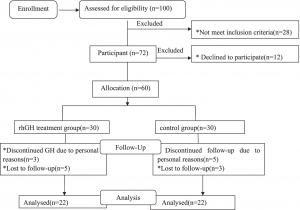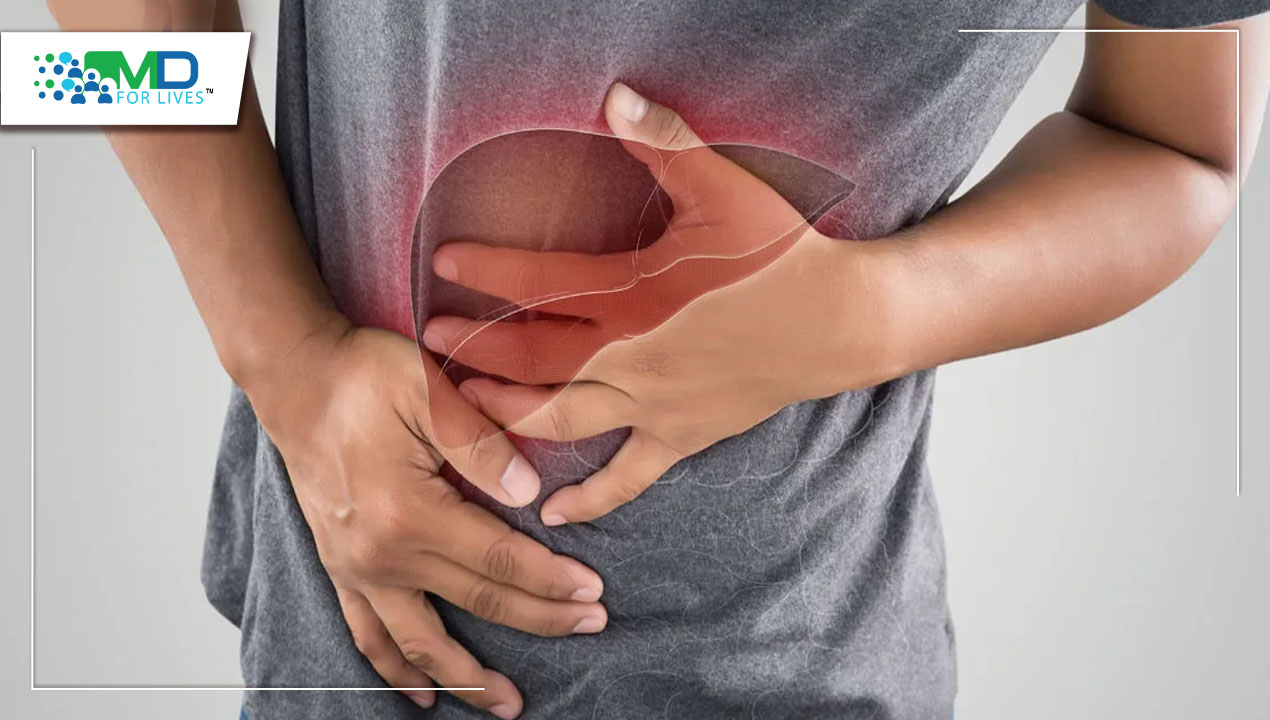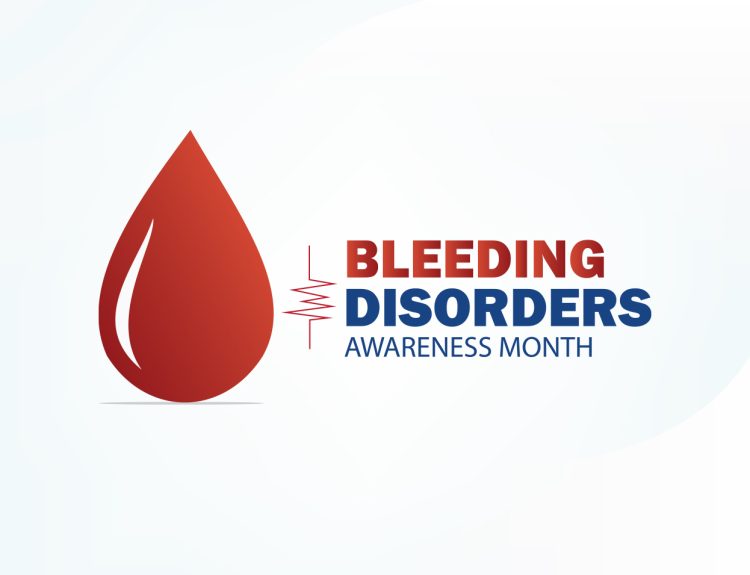Non-alcoholic fatty liver disease (NAFLD), a consequence of obesity, has become one of the most common causes of liver disease in children and adolescents, posing a severe threat to human health. Although multiple studies have confirmed a link between NAFLD and the growth hormone (GH)-insulin-like growth factor 1 (IGF-1) axis, no research has looked at whether recombinant human GH (rhGH) treatment can help obese children with NAFLD.
Recent research can help clinicians better understand the role of growth hormone treatment in treating obesity and NAFLD in boys, as well as its impact on liver enzymes and other cardiometabolic risk factors.
How was the research conducted?
The researchers conducted a 6 month randomized, open-label clinical trial at Shandong University’s Second Hospital’s Department of Pediatrics between August 2018 and August 2020.
As part of the study, 172 boys with obesity and NAFLD were screened. Finally, according to the study’s criteria, 100 boys with obesity and NAFLD were evaluated, and 72 obese adolescents met all of the inclusion criteria and were chosen as the final subjects.
Protocol:
Seventy-two boys met the criteria and were chosen to participate in the study; however, 12 children were declined. Finally, 60 children and their parents agreed to take part in the clinical trial, and participants were randomly assigned to one of two treatment groups: recombinant human growth hormone (rhGH) treatment or no treatment. The trial lasted 6 months, with visits at the beginning, 3 months, and 6 months for all participants (Figure 1).

Figure 1. Participant and Study Flow
The researchers performed various tests on all of the patients in the baseline study, including a liver function test, endocrine hormone levels, inflammatory factors, glucose and lipid metabolism indicators, abdominal ultrasound, and imaging parameters.
After a baseline evaluation, individuals in the rhGH treatment group were given rhGH therapy for 6 months. The GH dose was 0.1 IU/kg (0.033 mg/kg) every day. All visits included anthropometric measurements and laboratory tests (thyroid function, IGF-1, C reactive protein [CRP], liver function, lipid profile, glucose metabolism indicators, hemogram, and urinalysis). At a 6 month interval, the abdominal ultrasonography and oral glucose tolerance tests were redone.
Statistical Analysis:
The Shapiro–Wilk test was used to ensure that all variables were normal. The mean, standard deviation, and median were used to express the variables. For normally distributed data and skew distributed variables that can be log-converted to regularly distributed variables, an independent t-test was performed. The Mann–Whitney U-test was used to look at skewed distributed variables that could not be turned into regularly distributed ones.
By using the chi-square test, categorical variables were compared. To find out if variables were normally distributed or not, Pearson or Spearman correlations were utilized as needed. The Statistical Package for Social Sciences software version 20.0 was used to conduct the statistical analyses.
What was the outcome?
This clinical study was completed by 44 boys with obesity and NAFLD. In the beginning, the rhGH group and the control group had similar clinical characteristics, inflammatory variables, metabolic factors, and endocrine factors.
Changes in IGF-1 levels after 3 months and 6 months of rhGH treatment
IGF-1 levels in the rhGH group were considerably higher than in the control group after 3 and 6 months of visits. IGF-1 increased considerably with rhGH treatment at 6 months compared to the control group (582.45 133.00 ng/ml vs. 359.64 129.00 ng/ml, p 0.001).
Changes in CRP levels after 3 months and 6 months of rhGH treatment
C-reactive protein (CRP) levels in the rhGH therapy group were comparable to controls at the start. By the conclusion of the sixth month, the rhGH group had a lower CRP than the control group (1.17 0.76 vs 2.26 1.43 ng/ml, p = 0.003).
Effects of GH on liver function and ultrasonography of the liver
There were no significant differences in aspartate transaminase (AST) and alanine transaminase (ALT) between the rhGH group and the control group in the third month; however, gamma-glutamyl transferase (GGT) dropped in the GH group. At the six-month mark, the treatment group’s AST, ALT, and GGT levels were considerably lower than the control group’s.
All individuals had liver ultrasonography at 6 months to assess the presence of NAFLD. Six of the participants in the rhGH therapy group saw that their hepatic steatosis had vanished. There were also two participants in the control group who had no abnormal liver ultrasonography.
Effects of GH administration on BMI
At the baseline, the body mass index (BMI) of the rhGH group individuals was similar to that of the controls (2.56 0.65 and 2.75 0.61, respectively, p = 0.321). By the end of 3 months, neither group’s BMI had changed significantly. In comparison to the control group, the treatment group experienced a higher decrease in BMI after 6 months (2.28 0.80 vs 2.71 0.61, p = 0.049).
Effects of GH administration on cardiovascular and metabolic parameters
Subjects in the rhGH group witnessed a significant rise in HDL-C compared to the control group at the end of the third and sixth months, and the treatment group also had higher reductions in LDL-C compared to the controls. At the 3rd and 6th months, there were no significant differences in TC, TG, or UA between the rhGH therapy and the control group.
Effects of GH administration on glucose metabolism
The rhGH treatment had no significant impacts on insulin, fasting blood glucose (FBG), homeostasis model assessment-estimated insulin resistance (HOMA-IR), whole-body insulin sensitivity index (WBISI), or hemoglobin A1c (HbA1c) after 6 months of treatment and follow-ups.
Side effects of growth hormone therapy:
There were no major side effects observed in the subjects taking part in the trial. Two people in the rhGH group developed temporary hypothyroidism, which was discovered after 3 months of treatment or 6 months of rhGH treatment, respectively. After therapy with levothyroxine, the thyroid function was restored to normal, and the patient was monitored regularly. Headaches or edema were not reported by any of the participants.
Is growth hormone therapy a promising treatment option for obesity and nonalcoholic fatty liver disease?
The findings suggested that short-term rhGH treatment could improve liver enzymes and obesity-related secondary cardiovascular and metabolic problems in boys with obesity and NAFLD. The study registered no significant side effects. Further research is needed to understand the particular pathways involving GH, IGF-1, and NAFLD, as well as whether long-term Growth Hormone therapy can improve NAFLD. The appropriate dose of GH also has to be determined through larger studies.
Because this is a short-term clinical trial, the sample size is limited compared to previous research that used long-term clinical trials. The use of GH in the treatment of NAFLD is still being researched. To better understand the underlying mechanisms and develop a potential therapeutic impact of rhGH for NAFLD, more research is needed.
References:
- https://www.metabolismjournal.com/article/S0026-0495(16)00015-9/fulltext
- https://onlinelibrary.wiley.com/doi/10.1111/petr.12819
- https://bmcendocrdisord.biomedcentral.com/articles/10.1186/s12902-022-00967-y

MDForLives is a vibrant community of healthcare professionals and patients dedicated to shaping the future of healthcare. We provide valuable global insights to healthcare companies through online surveys, interviews, and discussion forums.






